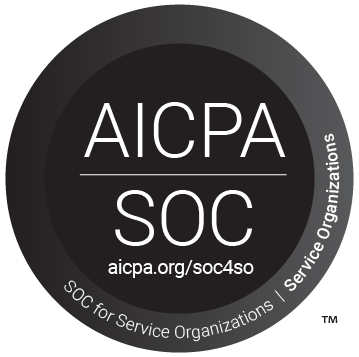How companies reduce their carbon footprint with Socialive

Key takeaways:
- Business travel for video creation emits upwards of 0.40 pounds of CO2 per traveler
- Companies can meet ESG criteria more easily with remote video creation
- Businesses using Socialive create more sustainable and inclusive content
Environmental, social, and corporate governance (ESG) programs demand that businesses comply with the latest sustainability practices. While ESG covers so much more, reducing emissions and the carbon footprint are baked into how many companies operate.
Video is one of those categories that may go unnoticed when it comes to environmental impact.
The traditional approach to video required travel, accommodations, on-site logistics, and tons of expensive equipment. But with video platforms built to create content from anywhere — without sacrificing content quality — it’s becoming easier for businesses to scale up their video output without running into ESG risks.
Here’s how companies are able to reduce the environmental impact of video by using Socialive.
Traditional video creation isn’t built for ESG
The old way of doing things was wasteful.
We’ve harped on how wasteful on-location video shoots can be, costing more than $1000 per video in travel alone. But money isn’t the only cost of an on-site video shoot.
Companies contribute to pollution when they send a video team into the field or bring individuals into a studio. Beyond that, there are elements like feeding your production crew and equipment usage that also generate waste.
The need to get people to and keep them at a physical location for video productions costs the environment.
Carbon emissions from travel
It’s well understood that most corporations’ video shoots don’t replicate the model of a big-budget feature film. Still, the Sustainable Production Alliance’s white paper on the carbon footprint of film and TV production shows that content creation can contribute to carbon emissions.
The SPA’s study showed nearly 25% of emissions come from travel, which highlights the impact of on-location video shoots.
Decision-makers may be aware that travel related to video creation can cost around $470 per day. But they should also consider each flight produces around 0.40 pounds of C02 emissions per mile per passenger.
Simply put, when balancing the budget, the production’s carbon footprint should also be taken into account.
On-site logistics
Sticking with the comparison of film sets, they can generate upwards of 72 tons of food waste. A company’s video shoot probably isn’t at that type of scale, but if you have a crew, you need to feed them. Food waste also harms the environment.
Beyond catering and water, accommodations, local travel, and energy usage all go into consideration. Limiting the number of people on site can help manage the amount of waste coming from a video shoot.
Equipment usage
The SPA’s white paper also showed that fuel made up nearly half of the emissions from productions. This was mostly due to generators to provide power for lighting, trailers, and other equipment.
Again, most companies aren’t putting those types of resources into their content creation. But even something as simple as a studio reservation, the use of high-grade lighting, or dragging along 100 pounds of camera equipment all contribute to emissions.
Especially if the equipment needs to be moved back and forth between locations, the environmental impact of shipping must also be considered.
This isn’t to say that a large-scale video production is bad for the environment or that we shouldn’t travel to capture content. But, it points out we should be intentional about when we go into the field.
Remote video creation supports sustainability goals
This is where a video creation platform like Socialive can help companies drive down the emissions of their content creation.
There’s no need to send a camera crew to a location or bring talent to a studio. Instead, the platform provides a number of ways to self-record from anywhere or to create a remote recording session with a producer on the other end.
Remote video shoots are a sustainable way to livestream or to record, edit, and then publish content. Especially when the content doesn’t warrant a full production crew, a platform that lets you create from anywhere makes it more “worth it” to tell that story.
No travel means fewer emissions, lower costs, and an increased ability to create more content. Remote content creation is the more sustainable approach compared to traditional video production.
How the Royal Society of Chemistry cut emissions with Socialive
The Royal Society of Chemistry hosts in-person conferences, roundtables with subject-matter experts, and sends their leadership to events across the world to promote advancements in chemistry. However, the association had to pick and choose between events they could attend.
As an organization focused on ESG and net zero, the RSC prioritized its carbon footprint and skipped many events. For the global media team, this meant that they were unable to cover the events they would like to. Plus, their panel discussions primarily featured the same few people located close to their London offices.
With Socialive, the RSC’s media team doesn’t have to worry about travel for each of these discussions. Every in-person event is livestreamed, so there’s no need for long travel to attend their events.
The RSC’s media team also uses Socialive to “be the expert not in the room” when there are events in other parts of the world that matter to the RSC. At an event like COP28, the RSC can send a handful of members — who were likely going anyway — to be on-site videographers and talent. The platform lets the media team produce each recording session and conversation from behind the scenes.
By reducing the amount of food, water, and travel for events, the RSC continues to lower its carbon footprint.
An added bonus for the RSC is that more of its members across the globe can participate in events virtually as a presenter or watch online. In addition to trimming their environmental impact, the RSC includes more people and perspectives in their content.
The social and governance impacts of video
We’ve mostly harped on the “E” of “ESG,” but the video also has an effect on social and governance practices. Video is the ideal medium for companies to showcase their people and help increase transparency.
Promoting diversity with video content
No one would suggest that simply showcasing a few people of color or women on screen is “doing DEI.” But for companies who do prioritize diversity, equity, and inclusion and have a strong social impact, video is the perfect way to show it.
Video reinforces the hard work that’s already been done. It’s not enough to do the work and keep it hidden behind the scenes.
Increasing transparency with town halls
Similar to promoting diversity, video can’t guarantee rock-solid corporate governance. But when corporate social responsibility is taken seriously by an organization, a town hall can help keep the leadership team accountable and provide transparency to employees and stakeholders.
Giving a direct line to leadership and making it so everyone in an organization has access to the powerful people in the room goes a long way to reinforcing the corporate culture.
Supporting ESG goals while creating video content
There are major steps that can be taken to reduce the emissions around video creation. By eliminating unnecessary travel, increasing the number of people who can feature in content, and providing a way to showcase the ins and outs of their operation, businesses can create video in a way that is much more in line with ESG considerations.
It won’t make you a B Corp company overnight, but sustainable video creation is well within reach.
One of the other ways many Socialive customers support their ESG goals is to create truly inclusive content that features the types of voices and stories that were deprioritized in the past. Check out how companies are using Socialive to create DEI video content to learn more.


